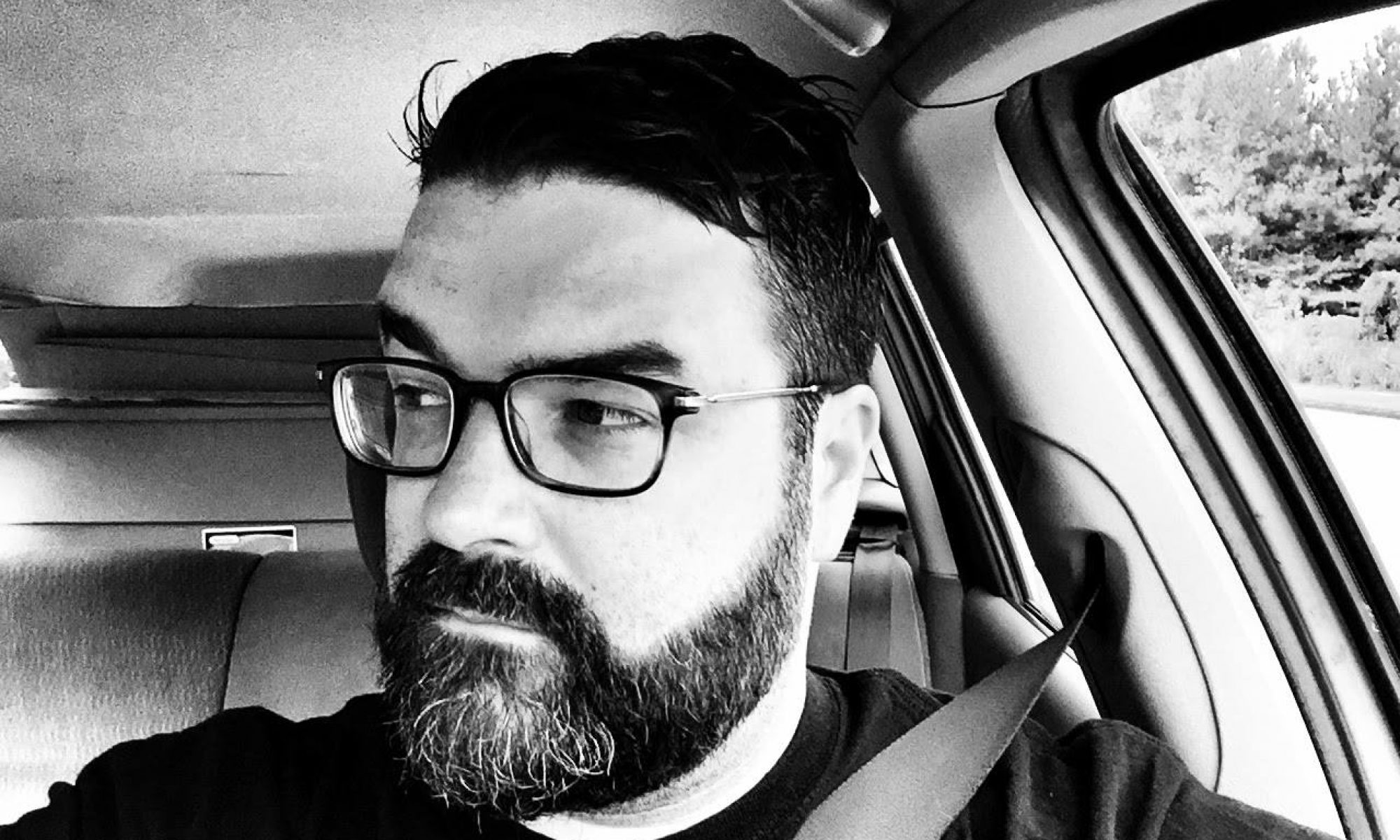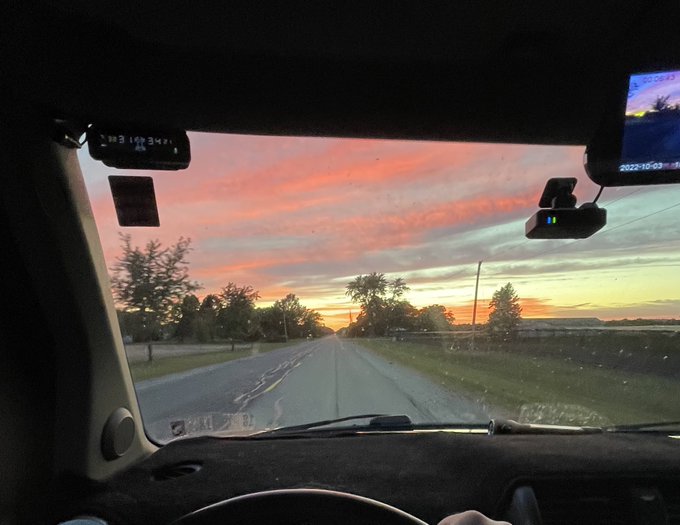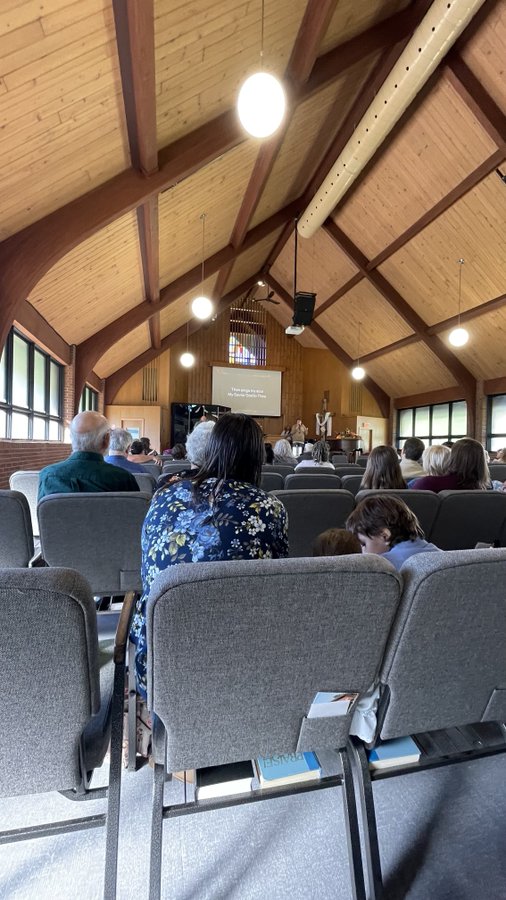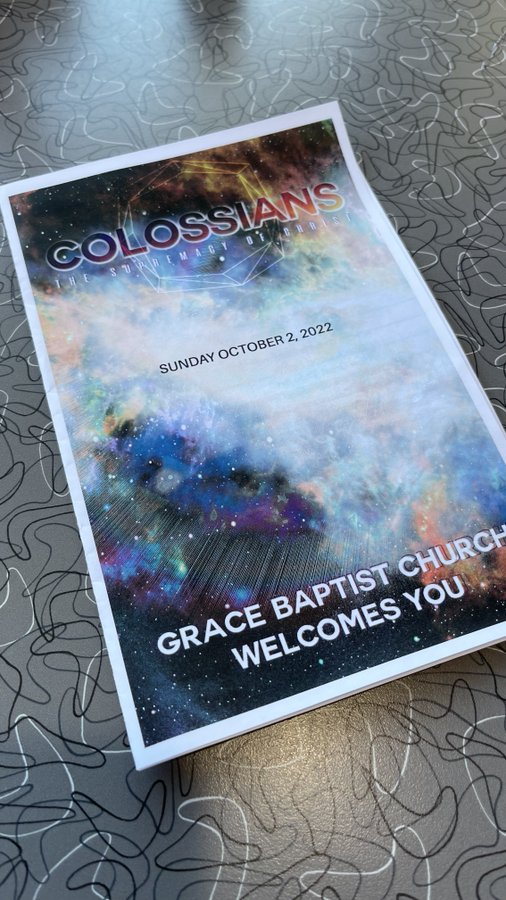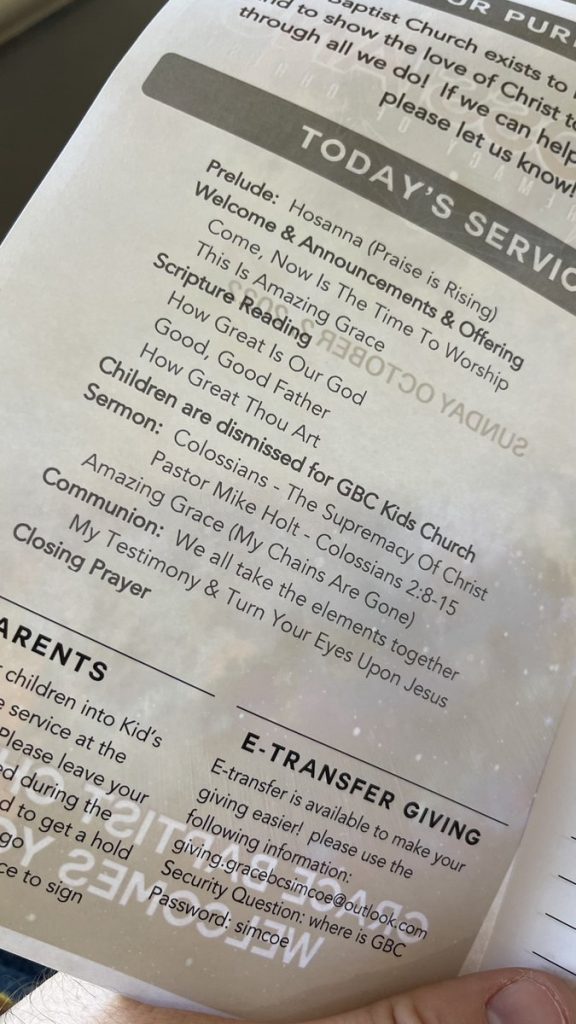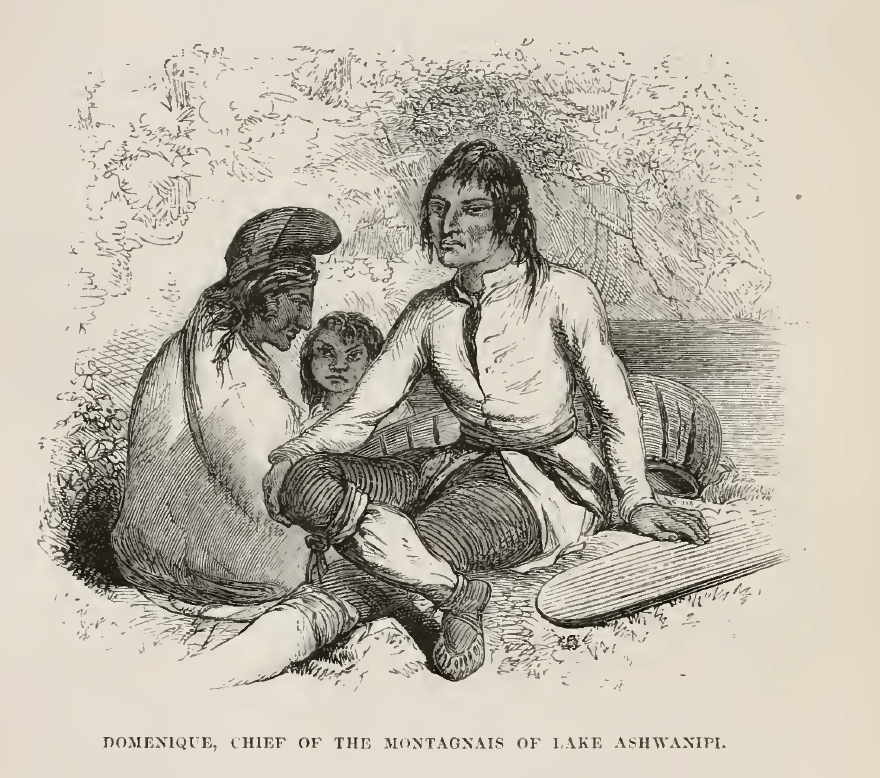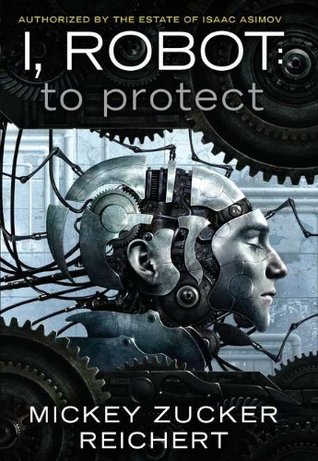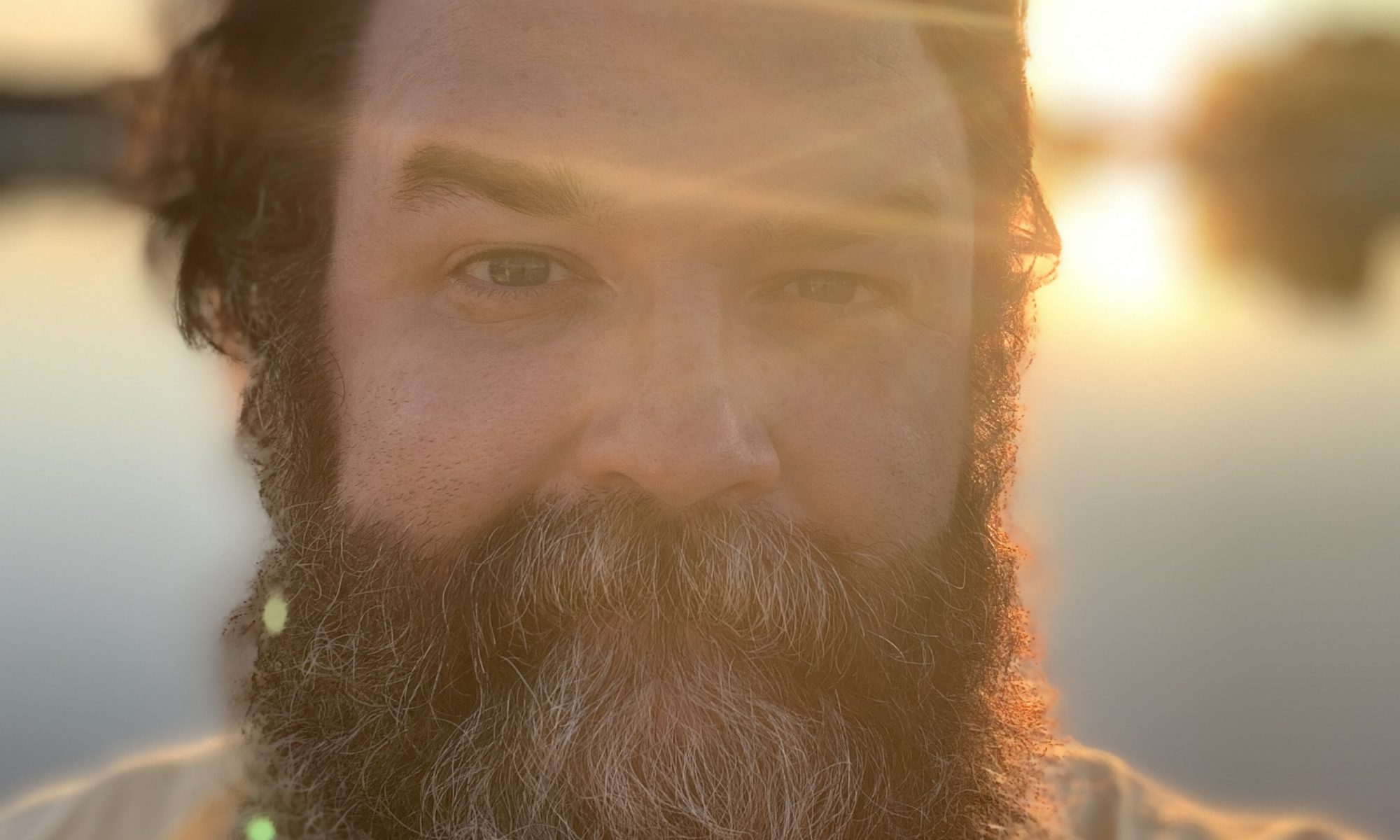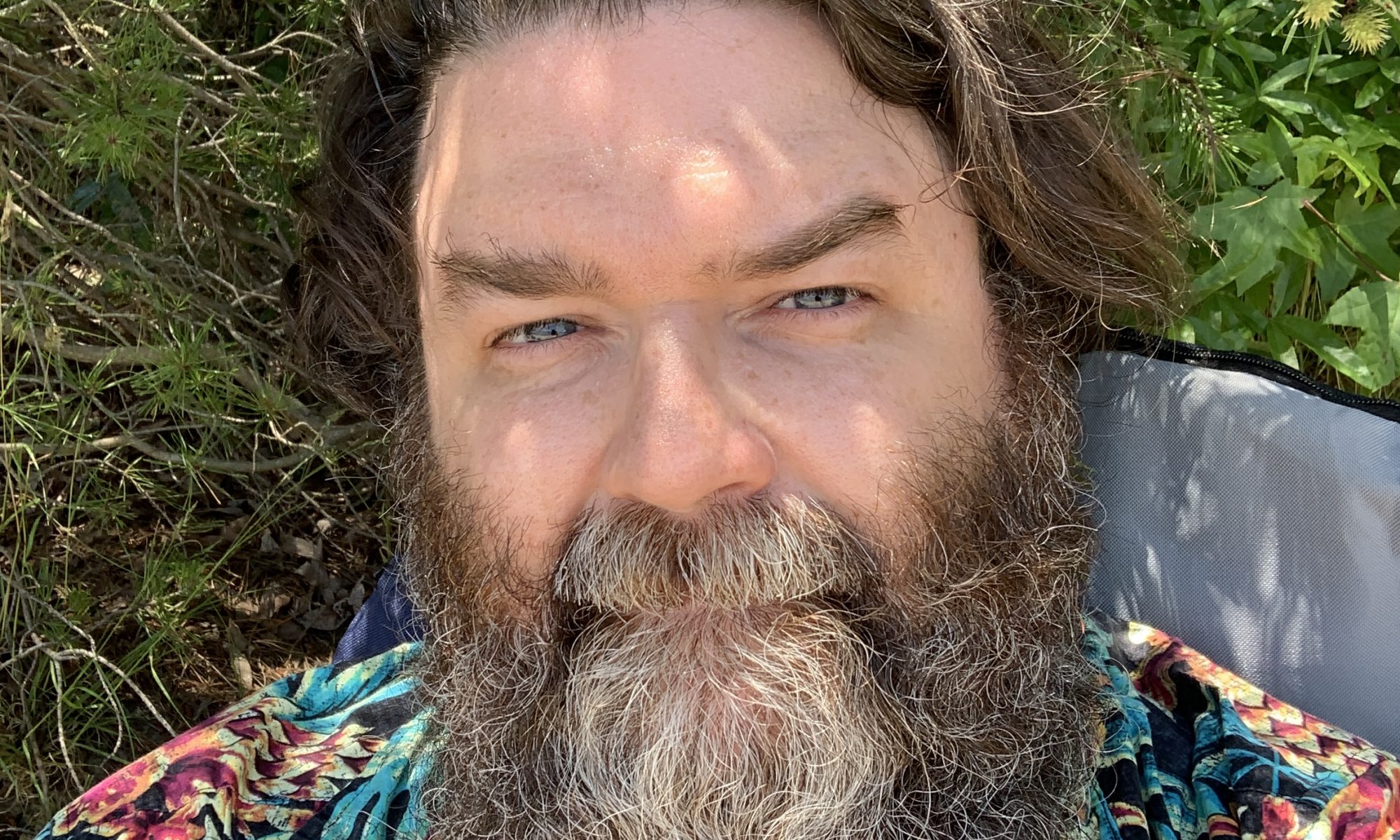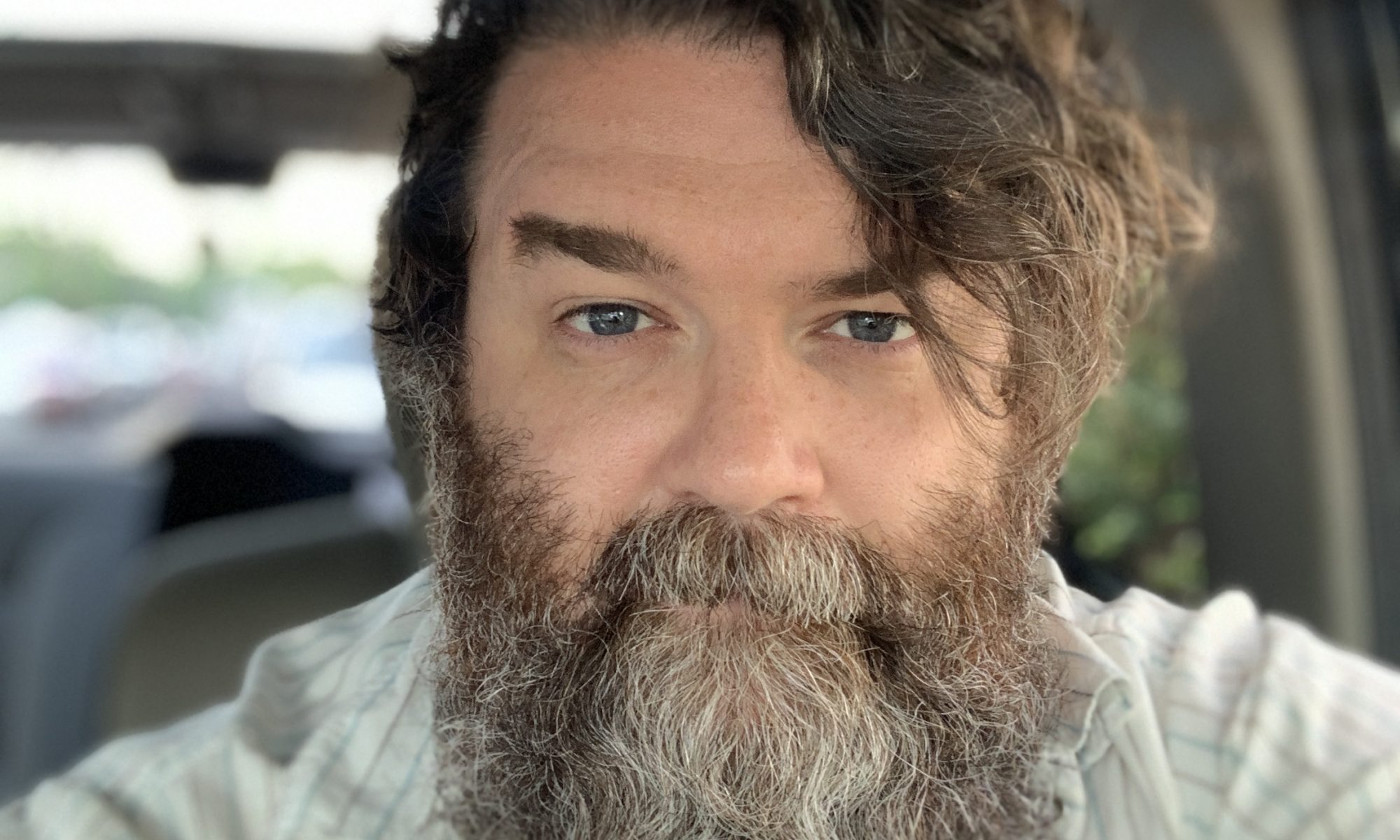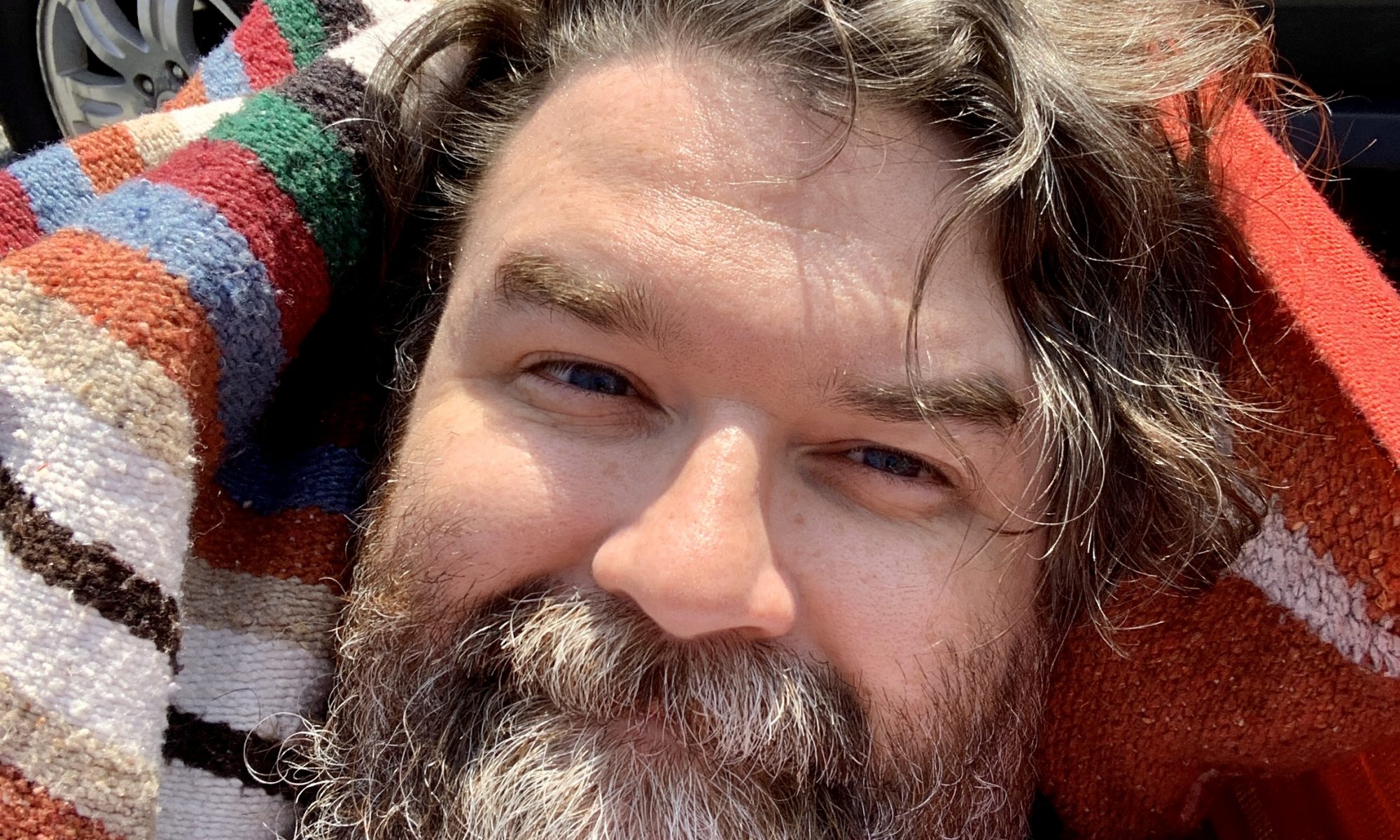I’m thrilled to share that the Johns Hopkins Center for Health Security recently featured me in a video interview as part of their article “Checklist to Build Trust, Improve Public Health Communication, and Anticipate Misinformation During Public Health Emergencies.”
In the interview, Adam Abadir and I discuss our work with the Baltimore City Health Department during the COVID-19 pandemic.
We developed a unique, viral approach to public health communications. Our strategies aimed to rebuild trust within our community and enhance resilience against misinformation, which had a significant impact during these challenging times.
Building trust in public health is crucial, especially during emergencies, and it’s an honor to have our efforts recognized. Check out the video and learn more about the checklist developed to help public health departments improve their communication strategies:
A Requiem for Spooky
I killed a cat on the way home last week.
A pickup truck was coming in the other direction.
As soon as it passed me, the cat darted across the road.
I was going slow already.
I hit the brakes.
It didn’t matter.
He was a big guy, all black, and very fluffy. Looked like a shadow with eyes.
I did a quick u-turn on the empty street, hit my flashers, and ran over to him.
He was still breathing as put my hand out to comfort him, but didn’t last long.
He didn’t cry.
I looked up in the direction he had been running; a house that resembled a well-worn and threadbare slipper.
There was a light on inside.
The porch didn’t seem like it would hold me.
Through the front door, I could see an older man in a bathrobe watching TV.
I knocked.
A silver-haired woman with bright eyes and glasses came to the door.
I asked her if she owned a black cat.
“A few!” She laughed, but then looked past me.
“Oh no.” She said.
“Yeah.” was all I could say.
She came out in her socks, and gently lifted the cat up from the stain on the pavement.
“I’m so sorry…” I said, I began to tear up.
“I told you, Spooky,” she admonished the cat, still warm in her arms. “I told you so many times…”
“I’m so so sorry.” I repeated.
The man called from the porch. “Spooky?”
“Yeap.” Replied the woman. “It’s too bad.”
She turned to me. “It’s not your fault. I just couldn’t keep him in, you know? Some cats just don’t take to bein’ indoors.”
The man, apparently ever practical, reappeared on the porch holding a garbage bag.
Their daughter came out, and took the bag from him.
She came out to us, smoothing Spooky’s fur down.
“I’m really glad you stopped and told us.” The elderly woman said.
“At least it was quick…” the daughter searched my eyes, it was a half question.
“Yes; very.” I reassured her. “I stayed with him until…”
She visibly relaxed. “Thank you for doing that.” She lifted him gently, closing his eyes. “A lot of people wouldn’a even stopped.”
They thanked me again, I apologized again, and they went back into the house, carefully cradling Spooky.
You were loved, Spooky.
I hope you know that.
Visiting Grace Baptist Church in Simcoe
Sunday, I visited Grace Baptist Church in Simcoe.
I had planned to visit Lynnville United Church, but I can’t figure out what time they have their service (the sign out front, their website, and the note on the door are all different).
So; I was 5 minutes late getting to Grace Baptist Church. The parking lot was nearly full, and as I came in, I was warmly welcomed and handed a bulletin.
The church was quite full; maybe 50-60 people, even using the balcony upstairs. The chairs were comfortable, and the band played late 90’s Christian rock. This was also the first church I’d been to where I’d seen nonwhite people. So I had hopes.
Then Pastor Mike Holt took the pulpit, and things began to shift.
The readings were focused on Colossians 2, which, while dense reading, are all about warnings against false prophets.
Pastor Mike Holt began using the text to warn against “the false teachings of science”.
He said “this is something we heard constantly during the pandemic” and that it was “spiritual warfare”.
He went on to tell how he had been so sick and weak this past week that he had been forced to lie on the couch for days. “But God.” He apologized to the congregation for his voice. During communion, seeming to forget his mic is on, his coughs reverberate through the church.
My mask is ON.
After communion, they sing another song, and dismiss.
A lady rushes up to me, introduces herself as one of the deacons’ wives, warmly welcomes me, begins to interrogate me in that very churchy way (do you live in the area?) and asks if I’ll be coming back.
I attempt to untangle myself from her politely, but she’s insistent. “Are you visiting? Are you looking for a church home?”
I told her that it is unlikely that I’ll be returning. She doesn’t let go. “May I ask why not? Your parents live in the area, right?”
Dear readers; I let this poor woman have it.
I said: “Frankly, I was pretty shocked by your pastor. Everyone has been so nice and friendly. But what he was spouting from the pulpit? I’m disgusted, honestly. Colossians is all about false teachings, and he’s up here DOING it.”
Some middle-aged dude has come up to eavesdrop in the background, but quickly realizes he doesn’t want any part of this, and turns away. She gets quiet and goes “I understand. I’ll be sure to relay this to the pastor.”
I replied “I sincerely hope you do”, and got out of there.
TL;DR: went to a church with an actively sick pastor who uses scripture to argue against science. 2/10, do not recommend.
Reading Response to Explorations in the Interior of the Labrador Peninsula
While I am in Kawawachikamach, I am taking Naskapi 2 from McGill University, which my Dad, Bill Jancewicz is teaching.
One of our assignments was to read a portion of a book titled Explorations in the Interior of the Labrador Peninsula by Henry Youle Hind.
The excerpt I read is available below.
Reading the selection from Explorations in the Interior of the Labrador Peninsula was fascinating for me for a number of reasons. There was a peripheral fascination with the pet beaver and the tools they used and how they travelled. But I was much more interested in the interactions between the various people in the story.
I loved seeing Domeninque’s interactions with his wife. It is quite clear throughout all their interactions that they are in a strong partnership. Domeninque consults with her at every single interaction, even calling her over to participate in conversations when Hind and Louis attempt to talk to him alone. Even though Hind doesn’t even bother to learn her name, it is clear that she has equal footing in every decision that is made.
It was quite clear to me that the Innu chief Domenique did not trust Hind at all, even from his caution when he first approached them on the river. Louis, who serves as Hind’s translator, detects Domeniques hesitation in helping Hind at all at a very early stage. He delays Hind’s request for Domeninque to give him Michel, a young orphaned Naskapi boy, multiple times. He intuits quite well that Domeninque does not want to let Michel go with Hind.
Domeninque has had a lot of experience with white colonizers, being a member of one of the tribes that were first contacted by the French, and it is clear he does not trust Hind at all. I really want to read the rest of the story to find out what Hind ultimately does.
I also got kind of annoyed with Hind as the story progresses. It’s clear that he values Native people and hires and pays them quite well (a dollar a day is near the top of what going wages were for the time period) and yet he repeatedly ignores or resents their advice throughout the narrative. He gets told by multiple people that the water is too high, making it dangerous to continue, by people who grew up and know this territory. And he ignores them, even though he’s paying them for their expertise. Hind even calls Louis “talkative and bumptious”, when he sees Louis is at ease talking with Domenique, despite having just used the man for multiple pages of repeated and redundant questions about the previous winter’s hunt and the icy conditions ahead.
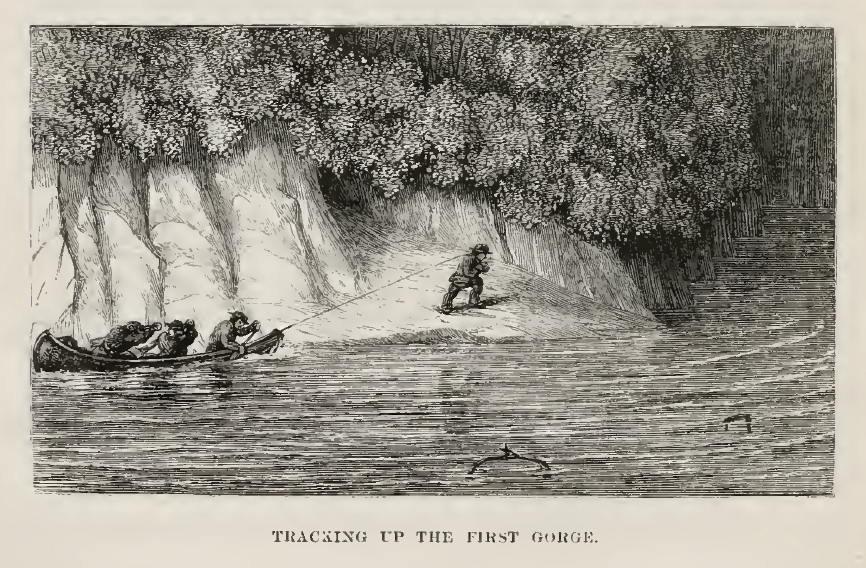
Hind then goes on to make racist remarks about how he knows how “Indians are deferred from any efforts involving great labour”. The high water in the Moise River is a life or death situation, and not something to be taken lightly. This attitude of doggedly pushing through any obstacle in their path is what led to the death of many white men who first landed on North American soil.
Hind seems at face value a neutral observer who simply records the things happening around him, but it is clear to me that as soon as his ego is at stake or if he feels himself the professional in the situation (despite having never travelled this part of the world), everyone else’s advice and opinions are null and void.
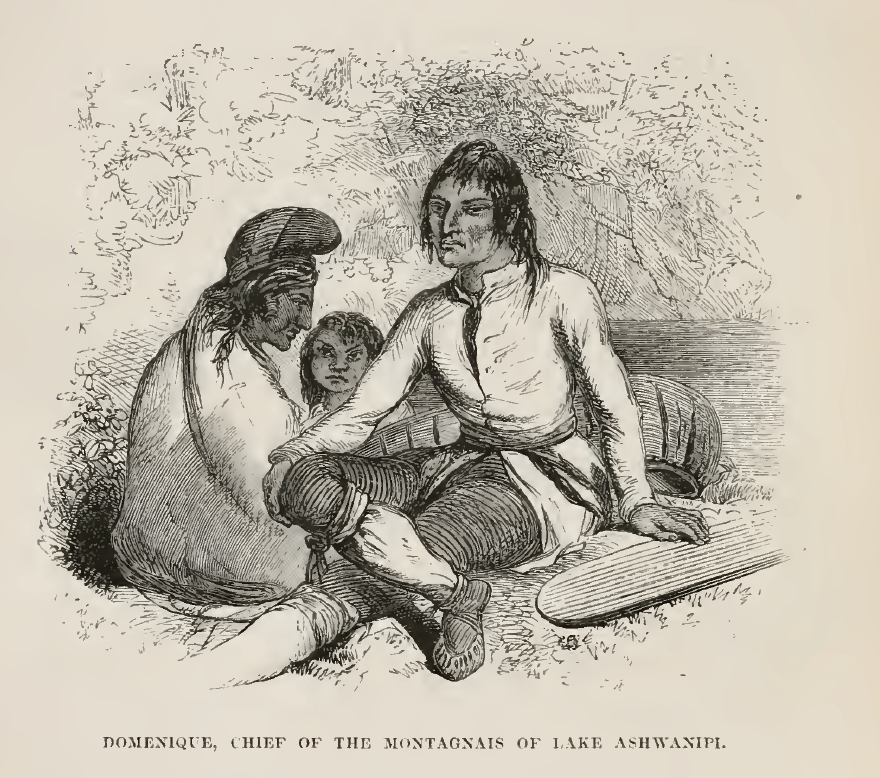
It is clear to me that Domeninque sees himself at a clear disadvantage in this situation. He and his family are alone on the river, and encounter a rather large (and uncounted in this section of the book) party entirely composed of men. Though the power dynamic is quite strong against him, and he fiercely protests the taking of Michel still. He makes the correct argument that Michel is the one and only failsafe his family has of survival should anything happen to him. Despite all this, Hind again does not take the Native person seriously, and asks Louis if Domeninque’s death threats are legitimate or not.
I look forward to reading more.
A Review of I, Robot: To Protect by Mickey Zucker Reichert
I did not like this book.
Not because it is a bad book, but because it tries to be something it is clearly not.
An Asimov book.
I am no stranger to spinoff books, which were written after the author has passed on. Caliban is one of my favourite books about robots.
However, this book just does not fit in the universe that Mickey Zucker Reichert tries to shoehorn itself into.
This book is like a rather long episode of House, with the occasional robot thrown in. Other than a few passing mentions about the Laws of Robotics and the introduction of a few of Asimov‘s characters, it there’s no resemblance whatsoever to Asimov‘s series.
Isaac Asimov wrote a list of recommended reading to his Foundation and Robots series. Even though chronologically, this book would take place towards the beginning of that series, it is quite clear that the author only has a superficial understanding of who Susan Calvin is and the world Asimov created, and at least did not seem to read very much into the series.
Chronologically, Asimov’s The Caves Of Steel is supposed to follow this Reichert trilogy (of which I will be reading no more of).
It is in The Caves Of Steel that Asimov introduces even the concept of a Humaniform robot; a robot that passes for a human. That humaniform robot, R. Daneel Olivaw, while in the perfect appearance of a man, does not have the customs or mannerisms of a human being, which gives it away as a robot.
Chronologically before The Caves of Steel, all of Isaac Asimov‘s robots short stories come. This is where his character Susan Calvin, the star of Reichert’s novel, is introduced.
However, in Asimov’s stories, at no point does she ever encounter a robot who bears even a slight passing to a human being. They are all described as man-shaped, but completely metal.
In this book, there is a Humaniform Robot, Nate, who is indistinguishable from all human beings. Not only does he look like a human being, but he also has a ridiculous number of mannerisms that match a human being as well, and even flirts with Dr. Calvin.
All this, we are apparently to believe, happens several hundred years BEFORE The Caves Of Steel, where the first Humaniform robot is introduced.
There are also technologies that Asimov never uses. Nanorobots, for example, do medical procedures. In Asimov’s universe, the concept exists, but large robots are shrunk down to a very small size and injected into people.
I wouldn’t even call this book science-fiction. It is more like speculative medicine instead. It is chock-full of medical jargon, which only those well-versed in medical fields would even be able to handle. She doesn’t do a good job of explaining the jargon as she plows through it, merely leaving it to dizzy the readers in a sleight-of-hand to lead them to believe that she knows what she’s talking about.
Even the actual basis of the deus ex machina that ends the book (spoiler ahead), doesn’t even follow the rules that the author sets out.
The book’s climax is the catastrophic explosion of a four-year-old psychopath who has Nanorobots implanted into her head, which was coded to convince her to detonate a bomb that is strapped to her chest.
However, that doesn’t make consistent sense, given the author’s own description of how the three laws of robotics work.
Previously in the story, two other similarly controlled people also detonate themselves, but the three laws of robotics prevent them from harming others around them. However, the four-year-old manages to blow up the boyfriend of Susan Calvin, somehow ignoring the three laws.
These are not, by far, all of the inconsistencies and anachronisms in the book, but they are the most egregious.
The romantic scenes are… cheap? They feel like badly done harlequin novels. Nearly all the men Susan encounters are “tall, slim, muscular, and have tousled hair”. It gets old really fast, and feels like a poorly done male author’s attempt to write from a woman’s perspective and failing badly.
While Reichert does a decent job laying out some of the broader themes of this society for humanity and anti-robot sentiment, she tries to shove too many things into this book that don’t necessarily belong.
The story also has weird transphobic commentary, and even a random Islamophobic rant thrown into the middle of a section that had nothing to do with the story. The author was trying to make sense of The Society For Humanity’s extremism, but instead of using home-grown examples like the KKK or neo-Nazi movement, instead chose to vilify a religion.
To that point, the book also shoehorns in non-white characters but does so in such a way that they are 2-dimensional and othered.
And there are really only two of them.
One is “Diesel”, a Black boy who is perpetually described as a bowling ball and is the only person in the book to have an object-borne nickname. He is Dr. Calvin’s first medical success and slides her into the archetype of white saviourhood.
The other is the homicidal four-year-old psychopath who just happens to be biracial.
I didn’t like this book.
I’ll likely never read anything else from this author. It’s not worth it.
Peace & Being Unsure
Questions from Melony Hill’s Writing for My Sanity Therapeutic Writing Workshop (@STMSBmore), held online.
“Healing requires from us to stop struggling, but to enjoy life more and endure it less.”
—Darina Stoyanova
• When do you feel calm, peaceful, and in touch with your inner self?
I feel the greatest peace when I am out in the forest, or by the water’s edge. Something about being out in cool air and surrounded by greenery helps me to decompress, and I begin listening to myself more. I find that when things get busy, I’ll ignore the child that is inside me.
That child never stops talking, I just tend to drown it out.
• Is there anything that you want to do but feel unsure about? What is it and why are you so unsure about it?
I think that sometimes I rely too much on my ability to fly by the seat of my pants, which makes me not plan enough. I’m not sure I’m saying I want to feel more unsure, but I think that not feeling unsure contributes to not planning things well enough.
Joy & Accomplishment
Questions from Melony Hill’s Writing for My Sanity Therapeutic Writing Workshop (@STMSBmore), held online.
“Healing old hurts can only begin when the children we once were feel safe enough to speak their hearts to the adults we are now.”
—L.R. Knost
• When was the last time you felt nothing but joy? What was going on around you? How can you bring that feeling back?
Right now, my kids are fighting like cats and dogs, so it’s really hard to remember what moments of pure joy feel like. 🙃
I do not think it’s the most recent, but what immediately comes to mind is swimming with my friend Ayinde on Manhattan Beach. It was just around sunset, and Ayinde had been practicing swimming having just learned. I had brought a waterproof camera with me, and was snapping shots as the sun set. The waves were large and warm, but were not violent. They moved us in a gentle rocking motion up and down once we got past the breakers, and we laid on our backs and just floated until it got dark. It was wonderful.
I’d love to go back.
• What have you not accomplished yet this year that you feel is important that you do before 2021 ends? Why is it so important to you?
I’d really like to get the two books that I’m working on published.
For one of them, I have a 2-month deadline with a photography partner, and so I feel like that one is going to be easily accomplished and done.
The other I have been working on for years. It’s actually 99% done, I just have to take the time to polish it and get it estimated for publication. I just feel like I am constantly stretched too thin by client projects, and never have enough time for my own work. But my own work doesn’t bring in the funds I need to survive.
Goals & Gratitude
Questions from Melony Hill’s Writing for My Sanity Therapeutic Writing Workshop (@STMSBmore), held online.
“Forgive the past.
It is over.
Learn from it and let go.
People are constantly changing and growing.
Do not cling to a limited, disconnected, negative image of a person in the past.
See that person now.
Your relationship is always alive and changing.”
― Brian Weiss
• What do you do every day to get closer to your goals? If you’re not satisfied with your answer, ask yourself, what SHOULD you do daily to get closer to your goals?
I claim I want to be healthier and more at peace. But I’m not working out enough, nor am I taking enough time to meditate. I’m not even coming to this class often enough. I’ve been prioritizing work over everything, and I’m not even getting paid properly right now.
I need to make sure I am active. I promised someone I would, but haven’t been. Even when Karate is cancelled, like today, I need to make sure I do something. I need to get up early and meditate and pray. I need to get to the beach and down to the water more. I need to prioritize myself and not work.
• What are you most thankful for? How do you show your gratitude?
Right now, I’m grateful for the help and support of those around me. I’m grateful for the little messages, the comments, the notes. Every day I make a gratitude list before I go to bed. It helps me to reset and remember everything that happened throughout the day. Sometimes because of my trauma, I don’t remember things the way the actually happened. The gratitude list helps me to reset some of that.
Habits, Priorities, Looking Forward, and Forgiveness.
Questions from Melony Hill’s Writing for My Sanity Therapeutic Writing Workshop (@STMSBmore), held online.
• What habit would you most like to break? What habit do you wish to
create?
I think I’d like to break the habit of absorbing what other people say about me when they do not have love for me. I soak hatred up so readily, even when I’ve been given a ton of love and the hatred is only a tiny portion of what I receive. As soon as the hatred comes, it will affect me, irritate me, and ruin other good things in my life. This bothers me.
I’d love to recreate a healthy workout habit. It’s tough because I feel like I’m always trying to play catchup, fitting exercise and walks and meditation into the cracks of my schedule. I know that’s no way to live, but I always feel like I’m in survival mode and don’t know how to break that cycle for myself.
• What are your top priorities? What keeps you motivated to accomplish
your goals?
Right now, my priorities are my kids, and saving up for whatever the next step is. It really feels like I’m in a bit of holding pattern in a lot of ways. Amazing opportunities have come through and I’m taking advantage of them, but they’re all local and tied to this space. So I’m listening and working on being content here.
I’m also working on my stress level. As the weather warms, that means I need to be getting out and hitting the beach and the forest more. It means eating properly and on time. It means paying attention to my mental health even when I’m busy.
• What are you looking forward to in the next 30 days? 90 days?
I had to look up when those would be. I don’t usually have the bandwidth to plan more than a week in advance.
I’m really looking forward to being a lot more active outside. I want to be at the beach a ton. I want to travel. I’m hoping restrictions get lifted soon so I can visit my parents.
• Is it easier to forgive yourself or someone who has wronged you? Why?
It is much easier to forgive other people, because I do not give myself enough worth. I know myself intimately, and I’m very hard on myself. I find it easy to forgive other people because I don’t know their entire situations, but I know mine.
Activities & Hateful Comments
Questions from Melony Hill’s Writing for My Sanity Therapeutic Writing Workshop (@STMSBmore), held online.
• Name an activity you hate but pretend you like to stay in the good graces of friends or family. Why does it matter to you?
Sometimes the exchange of my kids with my ex is harder than I let on. Lately it’s been much easier, but especially when the divorce was fresh, it was really really hard. Old, angry feelings would arise and dominate every thought, making it tough to relax or even get through it at all. But I had to grit my teeth, force myself to relax, and smile.
It matters, because it’s important to my kids. They need the stability. They need to know that their mother and I are on the same page. They need to know that no matter what, they’ll be loved. They know that, and that makes it all worth it.
• How do you respond to insensitive or hateful comments in a group setting? Tell us about the time you failed to speak up or a time you did.
I get a ton of hateful comments in a lot of public settings online. It’s slowed down a bit this days, but it really used to bother me a whole lot. What people think of me is something I think about often, often in really unhealthy ways.
I remember reading that Martin Luther King Jr. used to save all the hate mail and death threats that he got in a box, and so I started doing the same. I created a separate Twitter account that was dedicated to just that, and I would post screenshots of the hate mail I got there.
After a while, it got really depressing, but a close friend reminded me that I also get a lot of other messages that are much more positive and kind, and that I should save those too. I created a Twitter account for that as well. And somehow, the good messages always outweigh the bad.
